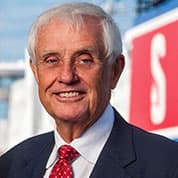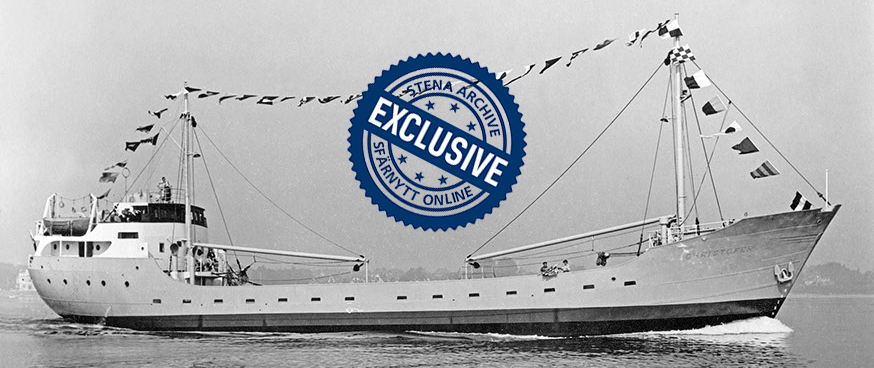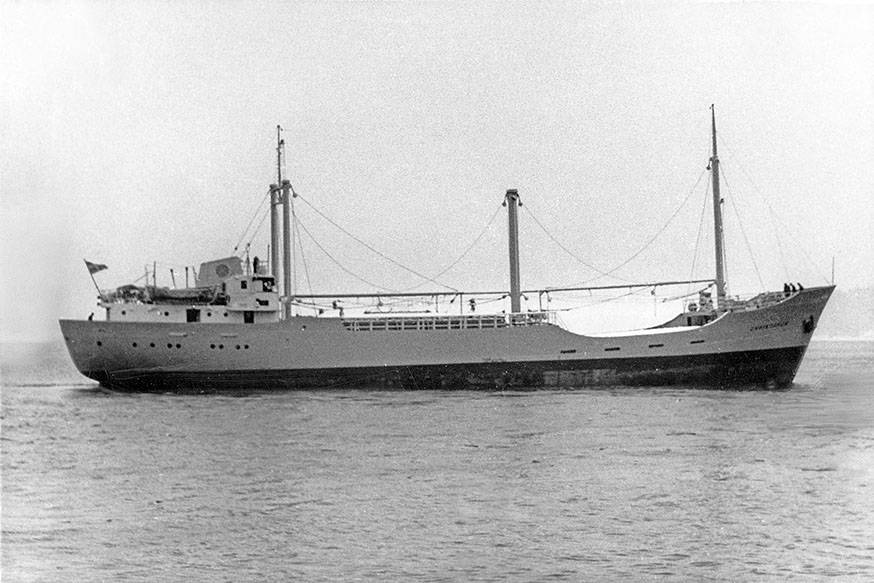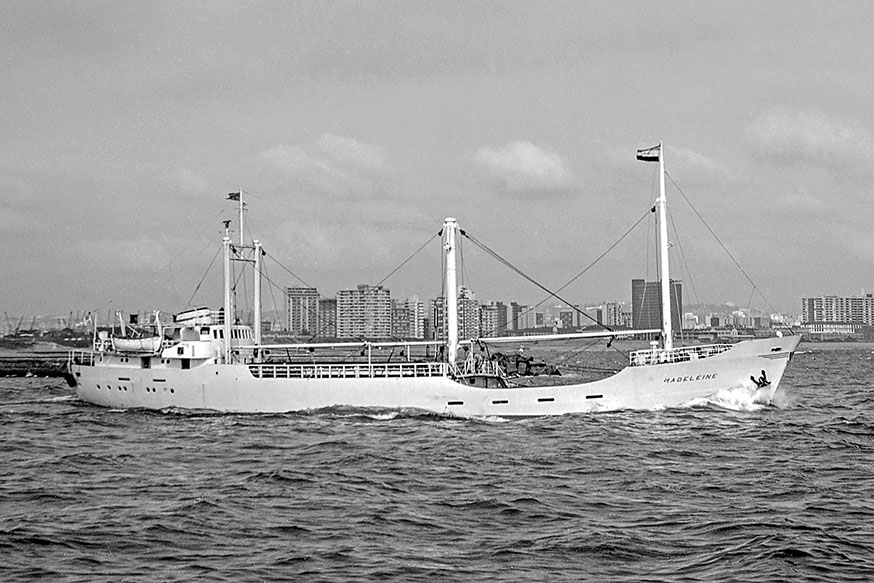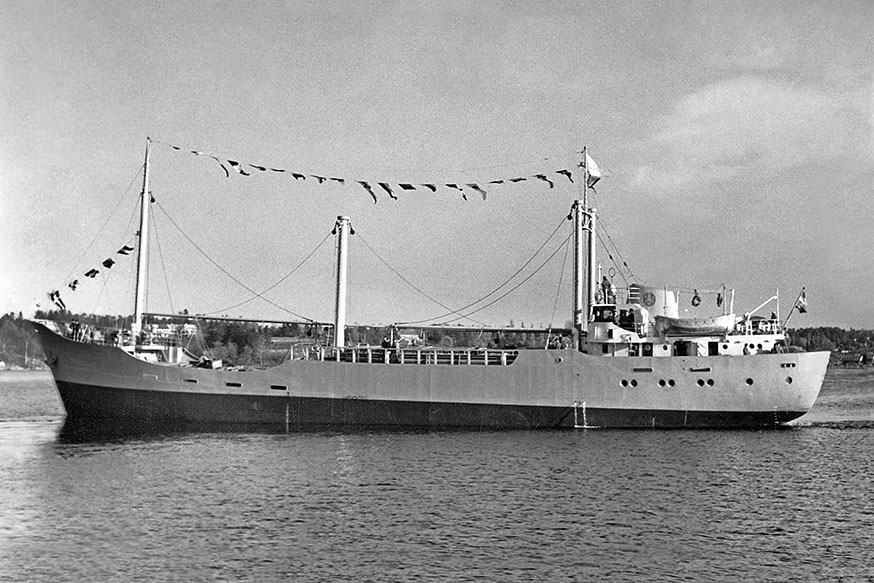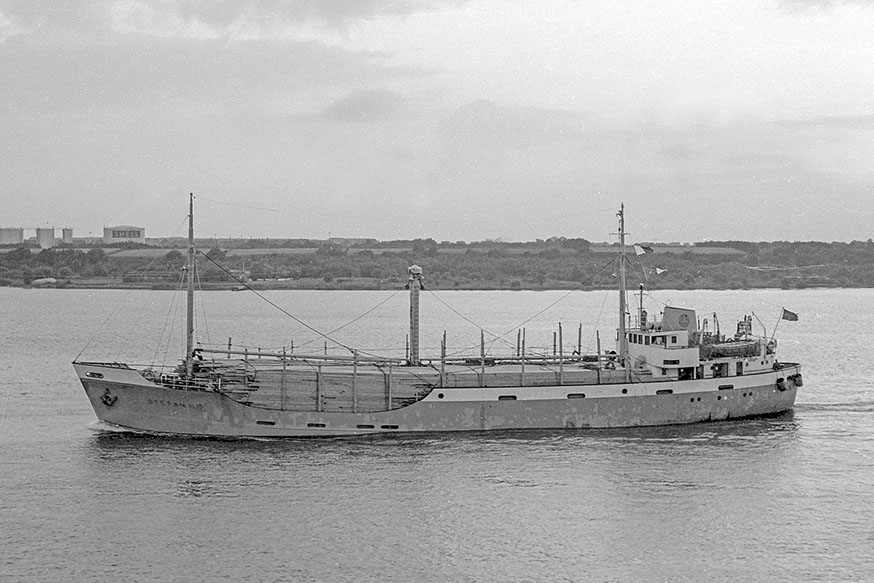The story behind
"THE PARAGRAPH VESSELS"
At the Maritime Historical Society, Club Maritim in Gothenburg, building a Stena archive through pictures and words is in progress. There is a lot of interest both outside and within the sphere of both older and newer vessels. Lennart Ramsvik and Morgan Rittedal are responsible for archival work. These articles will be exclusive for SfärNytt Online Magazine.
When the economy gained momentum after the Second World War the shipping industry made a paradigm shift pretty quick. The major shipping companies ordered large high speed ships with contemporary design in a rapid pace. A number of smaller shipping companies with money in their pockets ordered more traditional shelter-decker cargo ships with a deadweight of barely 3.000 tons, built in series at a number of Swedish shipyards. For the rest of the shipping industry with cargo – and more limited profitability – the future was uncertain.
The majority of these cargoes were transported by crew demanding steamships built between 1890 and 1930 which were 20 to 50 years old. About 70 ships were under Swedish flag and between 500 and 1000 gross tons. The gross tonnage was guided by master skills, size of the crew and the working hours plus the ship’s safety equipment. The shipping companies were rarely very financially strong and the ships were already exposed to severe competition from younger motorized units.
A new law on working hours for seamen came into force on 1 January 1949. The law required that decks people, except commanders, on board ships of 500 gross tons engaged in “North Sea or coastal navigation” only had to work 8 hours per day from previous 12. For machine crew the limit was set at 700 indicated horsepower of the main engine. The requirement to expand the crew with one more officer, engineer and at least two more men on deck – and the consequent demands on the crew quarters – made in one stroke many of the old steamboats unprofitable.
Soon skilled shipbuilders devoted themselves to construct vessels with a registered tonnage of just under the legal limit of 500 gross tons but with maximum deadweight. The result was named by Swedish Shipping Gazette to “paragraph vessels”. In this way you could skip one extra officer and two men on deck, even further rationalization was done and the vessels gradually developed with a guard-free engine room and instead monitored from the bridge. The first of these “paragraph vessels” were probably Kalmar Shipyards’ new building 367, Suzanne delivered in September 1951 (see Bång etc, in the Swedish vessels section, Sävedalen 2011).
Stena had already engaged in the shipping industry by rebuilding a Norwegian whaling ship to the motor sailed, Dan at the Falkenberg shipyard during 1947-48. Sten A. Olsson was also one of those who first fell for the new ship construction. The German shipyard Orenstein & Koppel in Lübeck had developed a prototype with a length of 43 meters and 500 tons deadweight, which came to be built in five “copies”, with mainly Swedish clients. As number two in the series Christofer was delivered in early August 1952. Christofer had already before delivery been extended by 7.7 meters to end up in a gross tonnage of just under 500 gross tons and became the fourth Swedish newly built “paragraph vessel”.
Sten A. Olsson saw the development potential for the vessel type and decided to replace the older steamers, purchased second hand, with newly built units. He gave Egon Pålsson at Eriksbergs Mekaniska Verkstad the assignment to construct a series of vessels of 499 gross tons and just below 1000 tons deadweight. Sölvesborg Shipyard delivered Stefan in April 1955. The remaining vessels were built at the Lidingö Shipyard in Gåshaga, Stockholm.
In order to achieve profitability in the major investment the Sten A. Olsson decided to greatly enhance the company’s shipping expertise. This was made through the employment of Sven Lindholm from Thunbolagen in Lidköping, who came to play an important role in the company’s continued development. This occurred, according to available sources, at the time range of the delivery of Christofer in April 1956. Madeleine followed in October 1956 to Sten A. Olsson Handels AB, named after the ship owner’s daughter. The series ended with Elisabeth in March 1957 to Rederi AB Samba (Joint Venture between Stena A. Olsson and Helge Olofsson), named after Helge Olofsson’s daughter. The new vessels were particularly well suited for wood transports, which was an industry where Sven Lindholm had a great network.
Christofer left the company first and was sold to Thordén Group in Uddevalla in January 1964. Stefan was sold to Denmark in September 1966 and Elisabeth left to a shipping company on Styrsö in November in 1966. Madeleine got after a few years a longtime charter along the West African coast. At the shipyard in Frederikshavn, she was fitted with a reinforced rig including a winch with a 10 ton capacity to be able to load large logs. Legendary Master was Osvald Johnson, also known as “Dynamite Johnson”. After various internal transactions within the Stena Group Madeleine was sold in May 1970 to a shipping company in Lysekil with the skipper Stig Ivarsson, Brodalen, as principal owner. This is done symbolically about the same time as the first cargo ferry Stena Carrier enters Stena’s fleet. More on that at another time.
As a little curio in the context regarding these vessels it can be mentioned that I, former employee of Stena Teknik, Morgan Rittedal, now retired for several years, made my first patterning voyage on board Elisabeth during a couple of months in the summer of 1959. I was not old enough yet, (then 16 years old), to get the pattern in the machine, so the trip was undertaken as “fair PTC / chef student.” For this, it was enough to be 15 years old. Signing on took place in Kings Lynn, England and the destination was a small place called Mezen, situated in the White Sea at Arkhangelsk. The trip went round the North Cape and the weather was bad at all time, so where possible we went “inshore” at the Norwegian coast to alleviate the waves. The return journey went to Eriksberg’s Shipyard in Gothenburg to load on a pair of steam boilers to another customer. Here was also signing off, and having turned 16 during the trip the sea voyages continued, but now as engineer officer pupil. My first ship was Broström’s school-ship MS Stureholm and my first trip went to Charleston in the United States. The rest is history.


